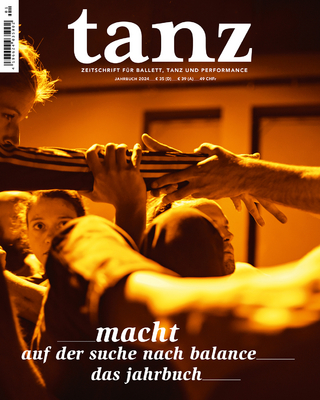
Theory for Theatre Studies: Movement
Methuen Drama (Verlag)
978-1-350-02636-0 (ISBN)
Part of the Theory for Theatre Studies series which introduces core theoretical concepts that underpin the discipline, Movement provides the first overview of relevant critical theory for students and researchers in theatre and performance studies. Exploring areas such as vitality, plasticity, gesture, effort and rhythm, it opens up the study of theatrical production, live art, and intercultural performance to socio-political conceptions of movement as both practice and concept. It covers movement training systems and considers how they have been utilized in key works of the 20th and 21st centuries. The final section traces the convergence of movement in theatre with other media and digital technologies.
A wide range of in-depth case studies helps to equip readers to explore new methodologies and approaches to movement as a performance concept. These include analysis of Satoshi Miyagi's production of Sophocles' Antigone (2017), Thomas Ostermeier's production of Ibsen’s Hedda Gabler (2008), the Berliner Ensemble’s Mother Courage (1949), The Constant Prince (1965) performed by Ryzsard Cieslak, and the National Theatre’s production of War Horse (2007). The final section considers a suite of concepts that shape postdramatic and intermedial theatre from China, Germany-Bangladesh, Australia, the United States, and United Kingdom. The volume is supported by further online resources including video material, questions, and exercises.
Rachel Fensham is Director of the Digital Studio at the University of Melbourne, Australia, where she is Professor of Theatre and Dance. Her key publications include To Watch Theatre: Essays in Genre and Corporeality (2009); and Dancing Naturally: Nature, Neo-Classicism and Modernity in Early Twentieth Century Dance (2011).
Series Preface
Acknowledgements
Movement: Introduction
Movement of vital beings: Aristotle
Movement as bodily technique: Mauss
Rhythmic movement: Lefebvre
Case Study: Pina Bausch
This book
SECTION ONE
Movement as History
Movement of the chorus: Ancient Greek theatre
Movement of ‘the flower’: Noh aesthetics
Case Study #1: Satoshi Miyagi’s Antigone (2017)
Gestural movement: Roman rhetoric
Case Study #2: I Am My Own Wife (2003)
Movement as style: The Natyasastra
Case Study #3: Zero Degrees (2005)
Processional movement
Hostility to movement: The anti-theatrical prejudice
Renaissance movement - from the vernacular to the cosmos
Case Study #4: The Tempest (1611, 2016)
Movement of the automaton
Case Study #5: War Horse (2007)
Conclusion
SECTION TWO
Movement Systems and Embodied Action
Holistic Systems: Craig, Delsarte and Dalcroze
Case Study #1: Operation Orfeo (1993)
Movement vitality: Phenomenology
Movement plasticity: Stanislavski and Ibsen
Case Study #2: Hedda Gabler (2005)
Movement mechanics: Meyerhold
Case Study #3, part a: The Constant Prince (1915)
Movement dynamics: Laban
Movement arrangement: Brecht
Case Study #4: Mother Courage and Her Children (1949, 2006)
Movement somatics: Grotowski
Case Study #3, part b: The Constant Prince (1965)
Movement assemblage: Butoh
Movement Sociology: Crowds
Conclusion
SECTION THREE
Movement in Contemporary Theatre
Speed: Attempts on Her Life (1997, 2007)
Slowness: The Artist is Present (2010)
Animation: Blackie Blackie Brown (2018)
Force: World Factory (2014), Made in Bangladesh (2015) and World Factory (2016)
Conclusion
Notes
References
Further Reading
Index
| Erscheinungsdatum | 09.03.2021 |
|---|---|
| Reihe/Serie | Theory for Theatre Studies |
| Mitarbeit |
Herausgeber (Serie): Kim Solga, Susan Bennett |
| Verlagsort | London |
| Sprache | englisch |
| Maße | 129 x 198 mm |
| Gewicht | 230 g |
| Themenwelt | Kunst / Musik / Theater ► Theater / Ballett |
| Sachbuch/Ratgeber ► Sport ► Tanzen / Tanzsport | |
| ISBN-10 | 1-350-02636-0 / 1350026360 |
| ISBN-13 | 978-1-350-02636-0 / 9781350026360 |
| Zustand | Neuware |
| Informationen gemäß Produktsicherheitsverordnung (GPSR) | |
| Haben Sie eine Frage zum Produkt? |
aus dem Bereich


